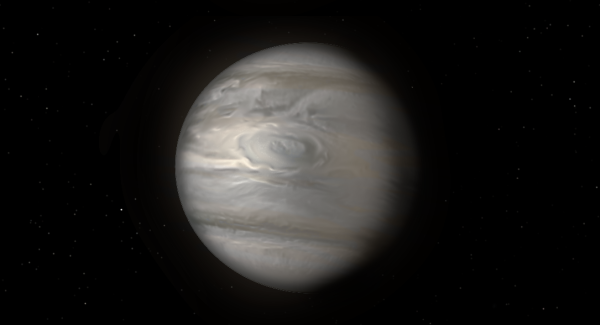BY LETTER
HydroJovian Type
Temperate gas giants with clouds predominantly consisting of water vapour | |
 Image from Steve Bowers | |
| Bronx, a hydrojovian in the New Brooklyn System, with the prominent Great Grey Spot | |
The temperature ranges of these worlds is -123 to 76 degrees Celsius, with upper atmospheres composed primarily of water ice, giving them a predominantly white appearance. Cooler polar regions may still support brown-stained ammonia clouds, although this coloration would typically be rather muted due to the lack of intense solar radiation. White clouds at the top of the atmosphere often overlay deeper organic layers or yellowish acid layers, so the overall appearance may be pale beige or cream in colour. If these lower cloud layers are not present or minimised, the planet can have a bluish cast resembling a Gaian terrestrial world. In many cases the planet is covered in a haze of one kind or another, reducing visible details to a minimum.
The predominance of white clouds give a high albedo of around 0.8.
Examples of this type are Harriot, Taphao Thong, and Hera.
Life-bearing Hydrojovians
Some HydroJovianworlds have moons on which life has developed. In certain cases microbial life may be transferred into the atmosphere of the gas giant itself, where it may thrive: many life-bearing gas giants are hydrojovian class worlds. These worlds may acquire a wide range of colouration from the atmospheric biomes.Example Macrystis.
Related Articles
Appears in Topics
Development Notes
Text by John M. Dollan, with comments by Steve Bowers
Initially published on 31 December 2007.
Initially published on 31 December 2007.






